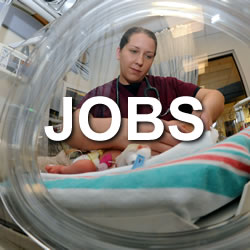CPR Needs Resuscitation & Resuscitation Needs CPR
The HWN Team | Insider

image by: Rama
Sudden cardiac arrest outcomes continue to remain dismal despite CPR. But, anybody can perform CPR, including children. It's not how well CPR was done, but whether it was done at all!
CPR, otherwise known as Cardio Pulmonary Resuscitation, is universally accepted worldwide as the emergency procedure of choice that is performed on people who have stopped breathing (respiratory arrest) or whose heart has stopped beating (cardiac arrest). Unfortunately, because of confusion and the lack of knowledge about CPR, very few people are capable or willing to perform CPR during emergencies. It remains underutilized and misunderstood.
Reversal of sudden cardiac arrest is time critical. When the heart or breathing stops, the flow of blood to the brain and other organs is interrupted. Brain and organ damage occurs within minutes of arrest. The Ameican Heart Association describes the sequence of events:1
- 4 minutes – time it takes for brain damage to set in without blood flow
- 7 minutes – time till irreversible brain damage occurs
- 7 to 10% - decrease in the chances of survival for every minute of delay until defibrillation, if CPR is not applied
Contrary to popular belief, CPR is not meant to and is unlikely to restore a heartbeat. The objective of CPR is to keep the blood circulating, similar to 'priming the pump', until more advanced personnel arrive. CPR is just a part of the continuum of the medical management of cardiac arrest. If heart function is restored, it is usually by trained medical personnel with a medical device such as a defibrillator.
Despite the advent of CPR, sudden cardiac arrest outcomes remain dismal. Statistics are provided by the American Heart Association. Others may differ, but they all point to terrible outcomes for people who sustain sudden cardiac arrest.
- 95% - fraction of cardiac arrest victims who die before reaching the hospital
- 49 to 75% - survival rates in adults when CPR plus defibrillation within 3 to 5 minutes of collapse is performed
- 294,851 – number of EMS-treated out-of-hospital cardiac arrests in the U.S. each year
- 80% - fraction of all out-of-hospital cardiac arrests that occur in private homes
- 2% to 10% - survival rates in children who develop out-of-hospital cardiac arrest
And, there continues to be underutilization of CPR. According to the AHA the overall incidence of bystander CPR in out-of-home cardiac arrests is only 14 to 38%. A 2008 online AHA survey on emergency awareness of 1,132 adults gave the following results:2
- 89% of respondents were willing to do something to help if they witnessed a medical emergency.
- 21% were confident they could perform CPR
- 15% believed they could use an automated external defibrillator (AED) in an emergency
Those who were not willing or felt not able to help cited the following are the barriers:
- Lack of confidence
- Fear of doing more harm than good
- And not surprisely, concern about legal consequences
Although CPR is ubiquitous it remains underultilized. Why?
CPR methodology continues to change which has created confusion in both the medical and public community.
The recommended CPR steps and variations in terms of age, vital signs, etc. are too complicated for lay persons and for that matter even healthcare professionals to grasp, much more perform during an emergency. Yes, even the medical community! In 50 years we have gone from laying people on their belly and moving their arms to an emphasis on chest compressions interrelated with breathing and now to the emphasis on mainly chest compressions with a de-emphasis on rescue breathing.
Huh? In fact, recent studies suggest that the survival rate and neurologic outcome are better in patients who have received minimal ventilation. As a result, the 2005 guidelines recommend a compression-ventilation ratio (30:2) for all single rescuers of infant, child, and adult victims (excluding newborns). The prior compression - ventilation ratio was 5:1.
The guidelines were set by the International Liaison Committee on Resuscitation (ILCOR) which is an international consortium of representatives from many of the world’s resuscitation councils. The guidelines were implanted in the U.S. as the 2005 American Heart Association (AHA) Guidelines for Cardiopulmonary Resuscitation and Emergency Cardiovascular Care.3,4
And to further add to this confusion, different health groups have slight differences in implementing the guidelines. As an example, AHA advocates delivery of 2 rescue breaths when the patient is not breathing.
The European Resuscitation Council (ERC) and the Resuscitation Council of the United Kingdom ((RCUK) put more emphasis on immediate application of chest compressions. The AHA also used to advocate following different steps in sequence such as checking first for breathing, then checking for a pulse, all within 10 seconds. The ERC and the RCUK recommend a simultaneous check for breathing and pulse within the same time span.
There are also disagreements about applying CPR on a bed or on the floor. Theoretically, CPR works better on a hard surface but moving a victim from bed to floor can a big challenge, not to mention loss of precious seconds. This discussion is currently raging in connection with the death of Michael Jackson.
Mouth-to-mouth ventilation presents the main barrier to bystander CPR.
The act of delivering rescue breaths or mouth-to-mouth ventilation is not an easy thing to accept, even by some EMS workers. For one thing, mouth to mouth contact is an act of intimacy in many cultures. For another, it puts both rescuer and patient at risk of disease and infection transmission. Of significance, a recent observational study by American researchers, indicates no evidence of any benefit from mouth-to-mouth ventilation in patients who suffered from out-of-hospital cardiac arrest.
The person administering CPR usually has to make a life-and-death decision without consulting the patient.
This is sometimes in conflict with the victim's religious and cultural beliefs. There are religious groups, for example, which are against the practice of CPR, an act which they believe amounts to reversing death and going against nature. For this reason, the AHA came up with ethical guidelines regarding CPR.5
CPR, as shown in the media including films and TV, has given the public an erroneous view of CPR.
Originally, CPR especially MMR was typically mimicked in comedy films, turning a life-saving procedure into object of ridicule and source of embarrassment. With the popularity of medical soaps, CPR, especially hands-only has become a common feature on the silver screen.6
However, its portrayal is still far from correct. For one thing, CPR survival rates on screen are abnormally high compared to reality. Second, actors do not perform CPR properly, not because of lack of knowledge but for safety reasons. Chest compressions during CPR can cause injury to a recipient, which can include bruising and fracture of the ribs. There have been reports of Michael Jackson's broken ribs due to CPR performed by his doctor. When performed on otherwise healthy people, CPR can interfere with normal breathing and heart function. Thus, in films, CPR is performed without the necessary force to avoid injuries to the actors or is done on mannequins.
A 1996 study of the TV shows, ER, Chicago Hope and Rescue 911, reports that "the survival rates in our study are significantly higher than the most optimistic survival rates in the medical literature, and the portrayal of CPR on television may lead the viewing public to have an unrealistic impression of CPR and its chances for success. Physicians discussing the use of CPR with patients and families should be aware of the images of CPR depicted on television and the misperceptions these images may foster."
Despite the doom and gloom, there are some heartening developments that should increase the incidence of bystander CPR.
Continued focus by the major advocate organizations on the promotion of bystander CPR.
Studies have shown that bystander CPR is effective in improving the chances of survival of a cardiac arrest victim. In 1994 Swedish researchers reported that “cardiopulmonary resuscitation initiated by a bystander maintains ventricular fibrillation and triples the chance of surviving a cardiac arrest outside the hospital. Furthermore, it seems to protect against death in association with brain damage as well as with myocardial damage. Japanese researchers reported in 2007 that bystander-initiated cardiac-only resuscitation and conventional CPR are similarly effective for most adult out-of-hospital cardiac arrests. For very prolonged cardiac arrests, the addition of rescue breathing may help.7,8
Ongoing simplification of CPR instruction.
'Hands-only CPR' is a good start. Not only is it easily understandable by both lay persons and medical professionals but it helps eliminate one of the major barriers to bystander CPR, mouth to mouth breathing. To facilitate counting 100 – number of compressions per minute the American Heart Association (AHA) trains people to time compressions to the tune of "Stayin' Alive" which has the right tempo.
Anybody can perform CPR, including children.
According to a study by Austrian researchers. Kids as young as 9 years old who had received six hours of life support training could perform CPR correctly four months after the training. The study was performed to determine whether CPR training in schools is useful. It has been pointed out that young students may not have the physical strength and cognitive skills needed to correctly perform such complex tasks correctly. The study concluded that “students as young as 9 years are able to successfully and effectively learn basic life support skills including AED deployment, correct recovery position and emergency calling. As in adults, physical strength may limit depth of chest compressions and ventilation volumes but skill retention is good".9
Bystander CPR is now considered an essential component in the continuum of care for Sudden Cardiac Arrest in EMS.
This management, called minimally interrupted cardiac resuscitation (MICR) technique probably produces the best chances for survival. Other terms used in this context are cardiocerebral resuscitation (CCR) or cardiac only resuscitation, or compression-only CPR. CCR entails three things; continuous chest compressions for bystander resuscitation, a new emergency medical services (EMS) algorithm and aggressive post-resuscitation care.10,11
Promotion of widespread availability of Automatic External Defibrillators (AEDs) and PADs, so-called public access defibrillation.
CPR alone cannot restart the heart in almost all cases, other than in the group of people that develop cardiac arrest from respiratory arrest, as in near drowning. Defibrillation by applying an electric shock directly to the heart is necessary to reverse the most common cause of cardiac arrest, ventricular fibrillation.
This is where the AED comes in. AEDs are portable, battery-operated devices that can be used to administer an electric shock and are designed to be used by lay persons even without prior training. As soon as the AED is activated, visual and audio cues guide the rescuer through the whole procedure. Evidence suggests that PADs can make a difference. In addition, attempts have been made to extend Good Samaritan legal liability protection to all users of AEDs.12,13
The Bottom Line
Bystander CPR is effective in improving the chances of survival for sudden cardiac arrest. Considering the number of out-of-hospital cardiac arrests and how critical CPR application is between time to of collapse and arrival of EMS to survival, it is very important that bystanders, be they family, friends or complete strangers are able to perform CPR.
The simplified generic version of the procedure 'hands only CPR' may increase the incidence of CPR and make a difference in the dismal outcomes from cardiac arrest. But, it is only part of the picture.
More emphasis needs to be placed on the availability of PADs. But, what's important is, not how well CPR was done, but whether it was done at all! And what is even more promising is that even children can do it with minimal instruction.
The message is clear – CPR Needs Resuscitation and Resuscitation needs CPR. Every June, the AHA celebrates the CPR/AED awareness week, aimed to promote bystander CPR willingness and readiness and offers CPR training courses all over the U.S. as well as online for everybody. Are you CPR ready?
Published November 13, 2009, updated June 15, 2012
References
- CPR facts and statistics, American Heart Association
- American Heart Association Survey Reveals Americans Lack Confidence in Lifesaving Skills for Common Cardiac Emergency, AHA News Release, May 8, 2008
- International Liaison Committee on Resuscitation (ILCOR)
- 2005 American Heart Association Guidelines for Cardiopulmonary Resuscitation and Emergency Cardiovascular Care. Part 4: Adult Basic Life Support, Circulation, 2005;112:IV-19 – IV-34
- 2005 American Heart Association Guidelines for Cardiopulmonary Resuscitation and Emergency Cardiovascular Care. Part 2: Ethical Issues, Circulation. 2005;112:IV-6 – IV-11
- Diem SJ, Cardiopulmonary Resuscitation on Television — Miracles and Misinformation, NEJM, Volume 334:1578-1582 June 13, 1996
- Herlitz J, Effect of bystander initiated cardiopulmonary resuscitation on ventricular fibrillation and survival after witnessed cardiac arrest outside hospital, British Heart Journal 1994;72:408-412
- Iwami T, Effectiveness of Bystander-Initiated Cardiac-Only Resuscitation for Patients With Out-of-Hospital Cardiac Arrest, Circulation 2007;116:2900-2907
- Fleischhack R, School children sufficiently apply life supporting first aid: a prospective investigation, Critical Care 2009, 13:R127doi:10.1186/cc7984
- Bobrow B, Minimally Interrupted Cardiac Resuscitation by Emergency Medical Services for Out-of-Hospital Cardiac Arrest, JAMA l. 299 No. 10, March 12, 2008
- Ewy GA, Recent advances in cardiopulmonary resuscitation: cardiocerebral resuscitation, Am Coll Cardiol 2009 Jan 13;53(2):149-57
- Jones J, Automatic External Defibrillators - Truth & Fiction, HealthWorldNet, December 11, 2008
- Hallstrom AP, Public-Access Defibrillation and Survival after Out-of-Hospital Cardiac Arrest, NEJM,Volume 351:637-646 August 12, 2004

Introducing Stitches!
Your Path to Meaningful Connections in the World of Health and Medicine
Connect, Collaborate, and Engage!
Coming Soon - Stitches, the innovative chat app from the creators of HWN. Join meaningful conversations on health and medical topics. Share text, images, and videos seamlessly. Connect directly within HWN's topic pages and articles.
















